Skis that are getting lighter and lighter in order to go deeper into the mountains.
However, the lighter it is, the more you have to sacrifice the gliding performance. This is because the use of lightweight materials and the thinning of the board may result in a lack of repulsion or a drop in shock absorption capacity. However, LOCATOR is a ski brand that focuses on skiing, ARMADA, so it is a surprising ski that does not impair the glide even though it is light. In addition, ingenuity to walk long distances has been devised, and it has become possible to hike lightly while preserving physical strength more than ever before.
Let's see how it works.
Carbacore core material is the reason why it is super light.
The LOCATOR is the successor to the Tracer & Trace, which was popular as the brand's backcountry ski until the 22nd season. It will appear in the 22-23 season with a full model change.
The biggest feature of LOCATOR is "lightness". Even with a waist of 96mm and a height of 178cm, the weight is only 1350g. This is only 1740g even when combined with the Tech Binding N TRASER TOUR, which the brand recommends with this board. When you pick it up, even with the bindings on, it's much lighter than a normal ski without bindings.
This overwhelming lightness is realized by a material called "carbacore" used for the core material. The characteristics of this carba core are that it is light, strong and has high resilience. Equipped with a technology called "carbon reinforcement" that stacks linear carbon on the core material to increase rigidity and torsional strength. This is a carbon technology that is also installed in the popular lightweight model "JJ" of the same brand, but each linear carbon sheet installed in the locator is thicker than the JJ. As the core material becomes thinner, the carbon is installed thicker to achieve both lightness and strength.
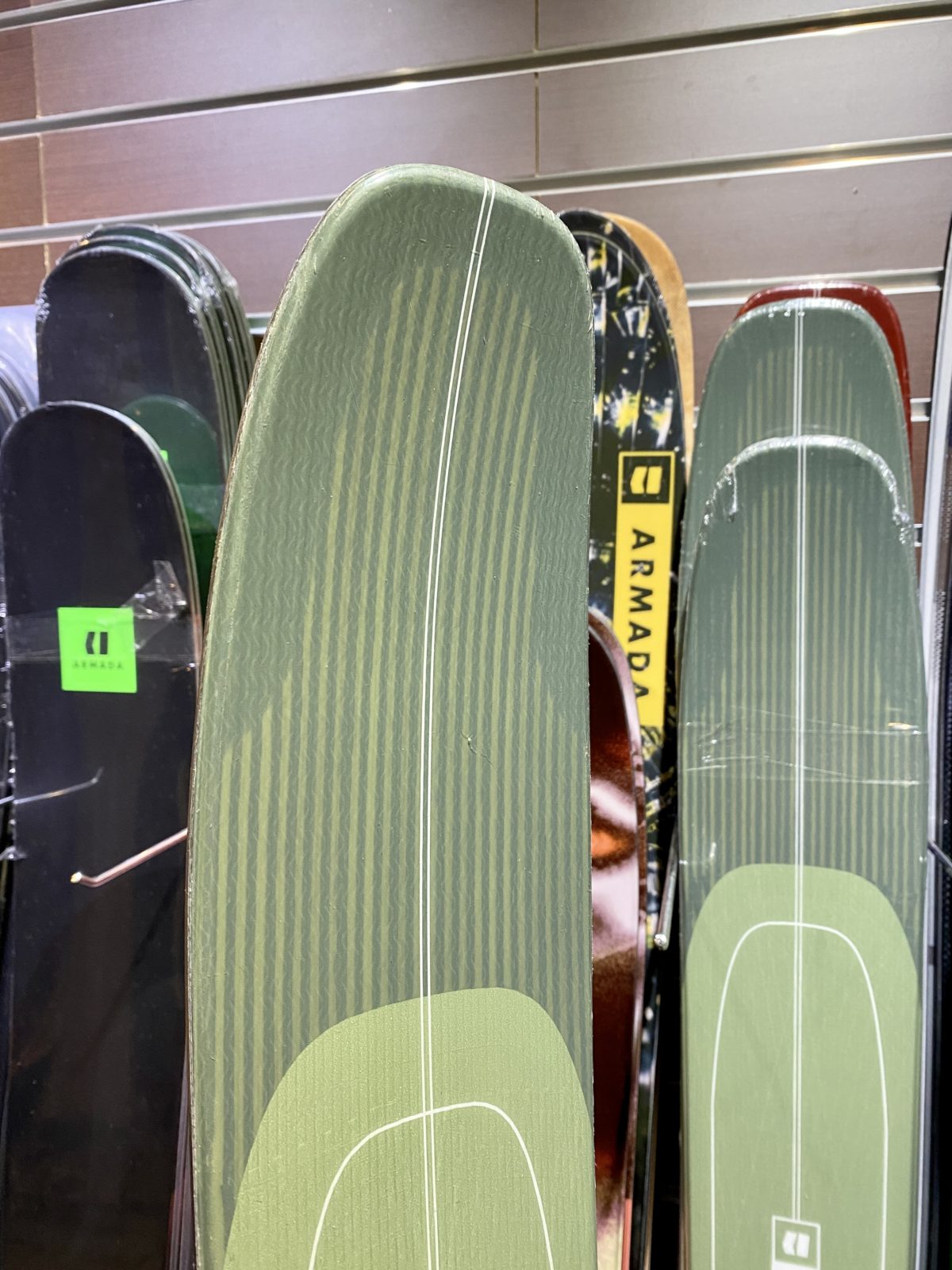
Due to the shape and arrangement of the core material and carbon, even though the overall finish is light, the ski maintains a flex that does not impair gliding performance and does not sacrifice glide. LOCATOR is a highly mobile ski that can ski not only in deep powder but also on hard slopes in the hinterland.
In addition, I would like to add that the sole uses the Comp series sole, which is the same material as racing skis. It can be said that ARMADA, which is particular about gliding performance, uses high-quality materials for backcountry skis.
LOCATOR with high walking performance
The locator has some tricks to make it easier to hike.
First, each model has a different rocker length. Thinner boards have shorter rocker and thicker boards have longer rocker. This is due to the wide area of contact between the seal and the snow. If the waist width is wide, even if the rocker is long, the plate is thick, so the seal has a wide area in contact with the snow and bites firmly into the snow. For smaller waists, the rocker is designed to be shorter to maximize seal and contact surface.
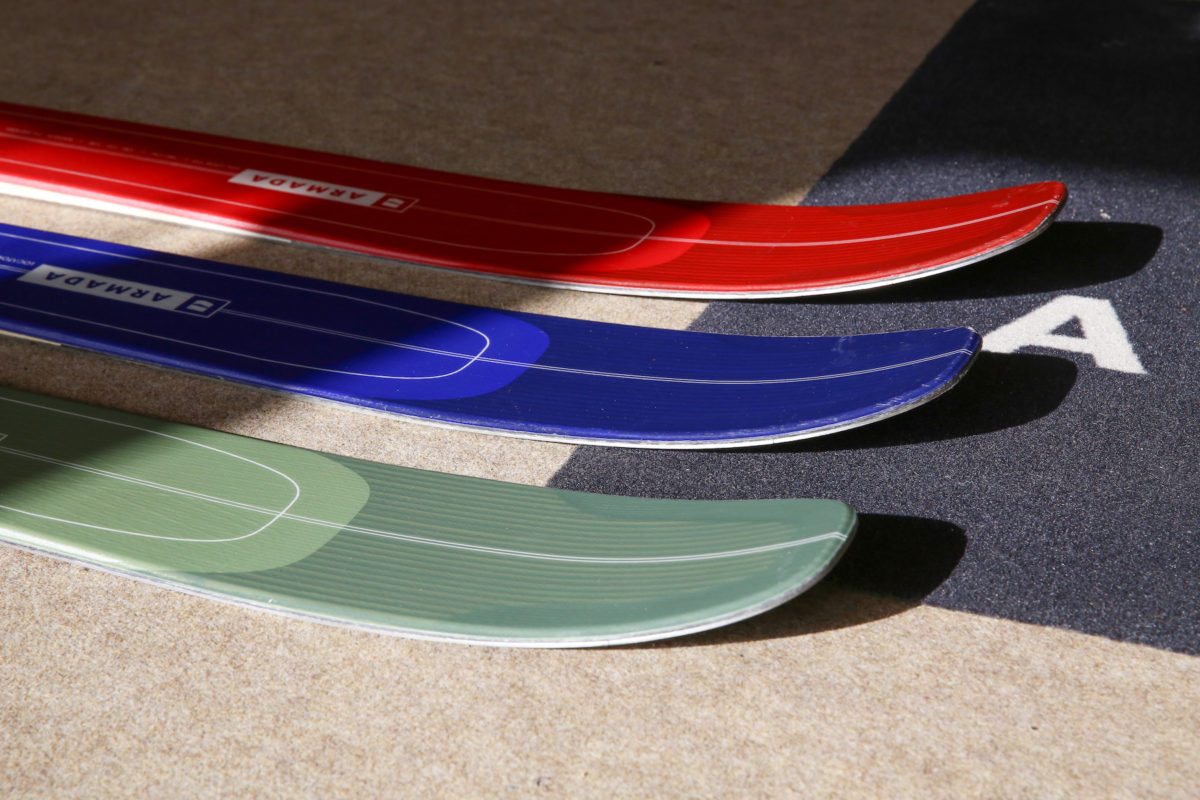
Also, this is a design that makes sense even assuming a slipping situation.
Rocker length is designed with the focus on increasing buoyancy in powder, so the thicker the board, the longer the rocker. On the other hand, a board with a narrow waist width is not often taken out in heavy snow, so there is no problem even if the rocker is short. And the tail end has a slightly recessed round bad tail processing.
The seal clip is automatically centered for quick seal attachment and detachment. With the twin-tip shape, the seal that was easy to slip off during hiking is fixed, making it possible to hike without stress. This is a specification that allows you to go faster and farther, and at the same time it is a specification that allows you to concentrate on skating without worrying about unnecessary things while preserving your physical strength.
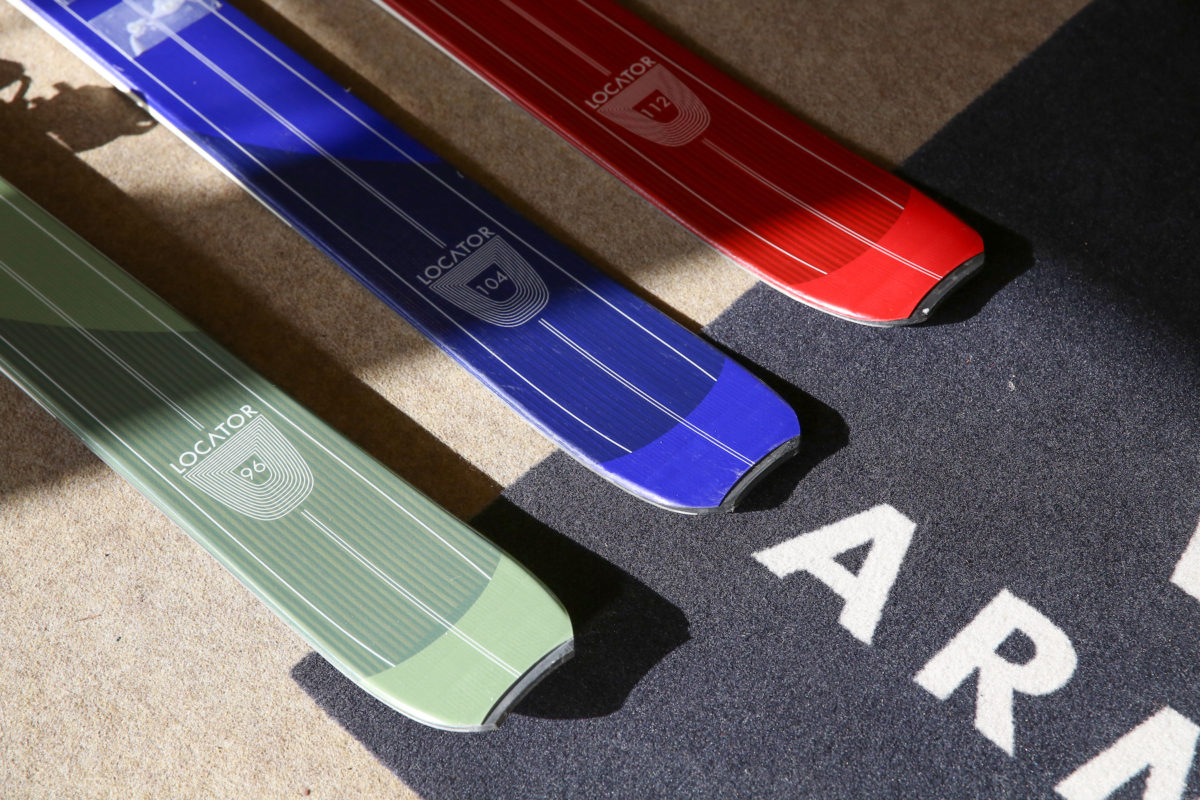
LOCATOR lineup
LOCATOR has 4 models with different waist widths.
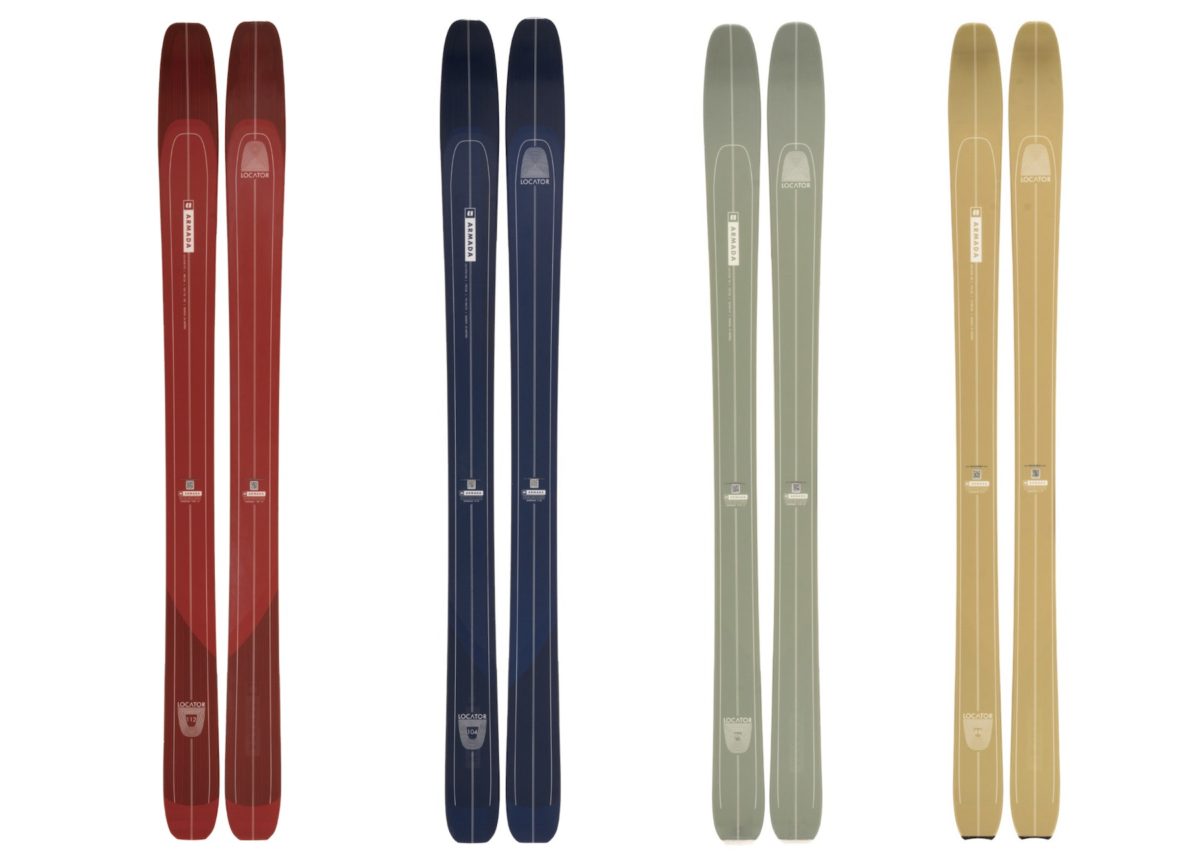
From the right
■ LOCATOR 88
Developed to guide riders faster and farther.
Developed as an ultra-lightweight long touring ski, it boasts the highest mobility in the series. L=152,162,172,182cm
D=116-88-109(172cm)
R=20.5m(172cm)
88,000 yen
■ LOCATOR 96
The overall balance is good, and you can feel the most hike and ride style.
This board is recommended for people who often take long hikes while focusing on slipping. L=157,164,171,178,185cm
D=127-96-117(178cm)
R=21m(178cm)
93,000 yen
■ LOCATOR 104
High performance can be demonstrated in all conditions.
A ski that can handle both powder and packed snow in the BC area where soft and hard slopes coexist. L=162,170,178,186cm
D=131-104-122mm(178cm)
R=22m(178cm
yen
■ LOCATOR 112 112
was born to hunt deep powder.
By lowering the camber arch while having a wide top that generates buoyancy, you can maintain high speed even in deep powder. L=166,173,180,187cm
D=136-112-128mm(180cm)
R=24m(180cm
yen
It's super lightweight and comfortable to climb without stress, and because it's a brand that emphasizes gliding, I found that it's a board that doesn't neglect gliding performance.
Here, we asked the rider "Kawaguchi TKY Takaya", who has actually worn the skis from last season to Tateyama this fall, about how he enjoys these skis and his impressions.
Impression of ARMADA Rider Kawaguchi TKY Takaya
I started using it in February 2022, and have used it in Nozawa Onsen, where I am based, Shirakawago in Gifu, Mt. Myoko in Niigata, and Mt. Fuji.
I also used it in Tateyama in November of this year. The Locator is just a light ski. The skis I use are 178cm long with a waist width of 96mm and weigh only 1350g per leg. You can reach your destination faster and feel less tired, which makes the tour more enjoyable.
The estuary slips comfortably. Sliding turns are possible even in powder
The side curves are especially noticeable. Recently, there is a tendency to prefer skis with side curves so that you can enjoy all-round skiing from BC to slopes with one ski, but the ski I use is 96mm wide and has a radius of 21m.
If you try to carve, it will be a big turn, but it is ideal for sliding while adjusting the arc of the turn and sliding the tail. If you carve hard and slide on a tight side curve, the ski will lock up, and in the backcountry where various snow conditions are expected, there is a risk that you will not be able to respond suddenly to rocks, snow masses, cliffs, etc. I have. However, by being able to slip and slide, you can control the skis freely, so you can avoid danger. In addition, the tapered shape of the nose reduces the swing weight, and combined with the overall lightness, the ski is easy to operate.
And this gentle side curve is at its best when climbing. When you cut a jig and hike on a steep slope, you hike so that the edge bites, so only the side of the ski is in contact with the snow. If the side curve is tight, the area that contacts the snow is small and it is difficult for power to be transmitted to the snow, so there is a risk of sliding down, and you will be tired from using extra power to prevent slipping. However, if the side curve is gentle, the area that contacts the snow on a steep slope will be wider, making it easier to walk, and the nose and tail will not get in the way, so the edge of your feet will be better. As a result, there is a sense of stability and there is a merit that it is hard to get tired.
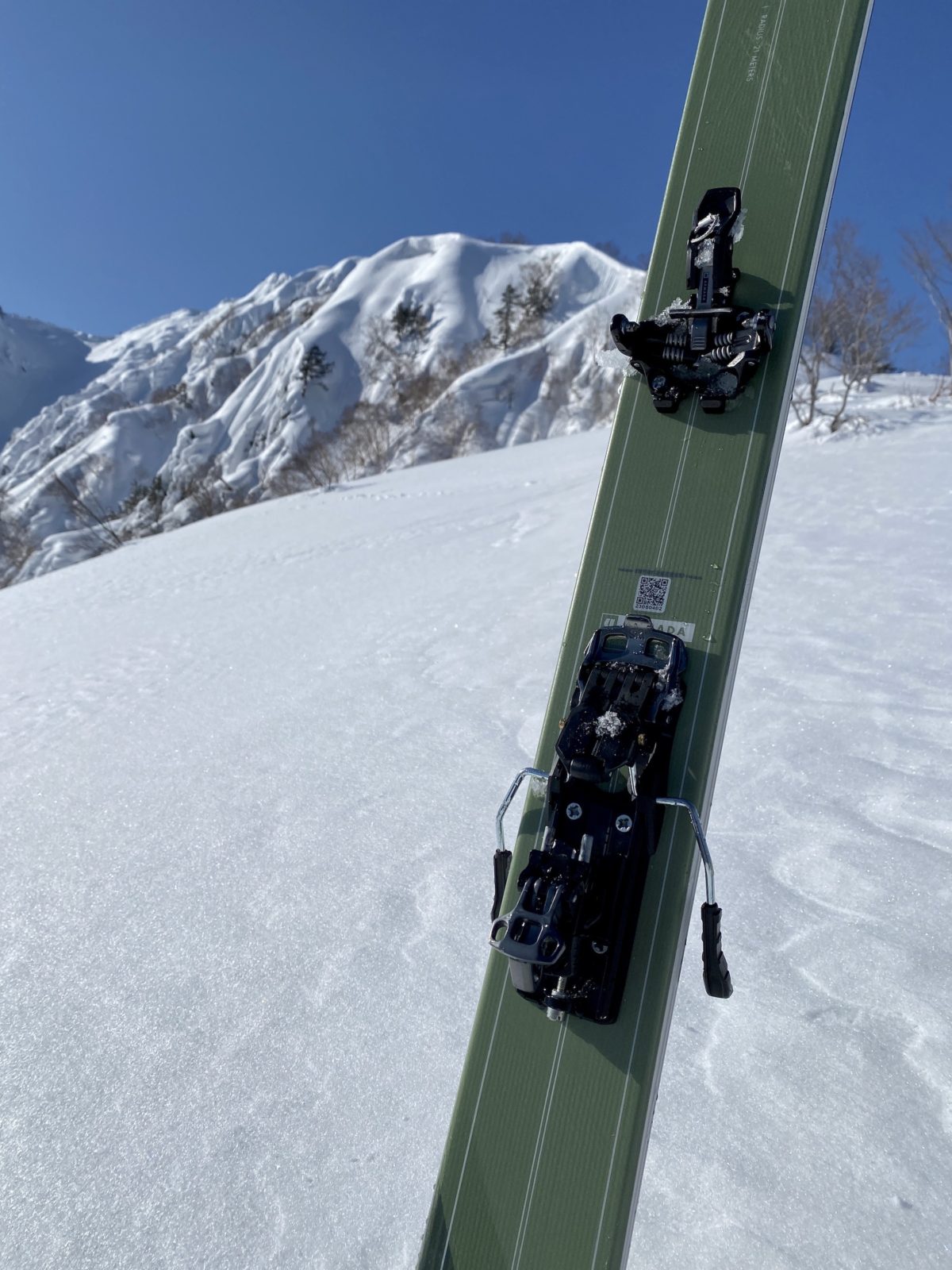
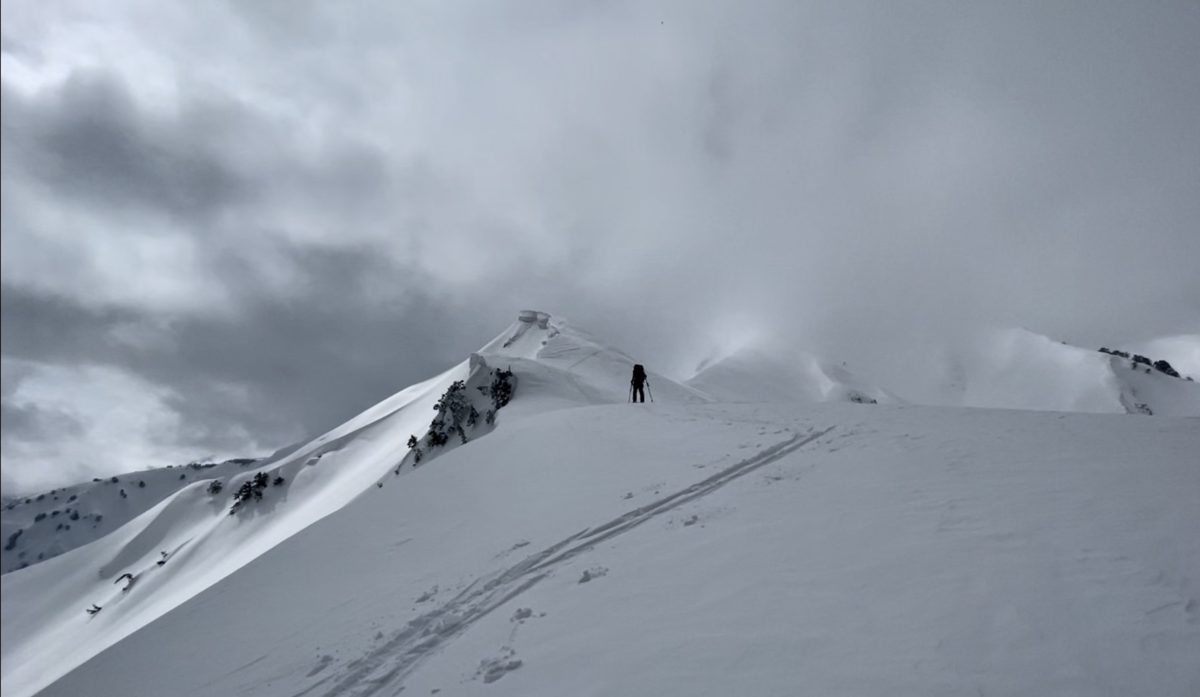
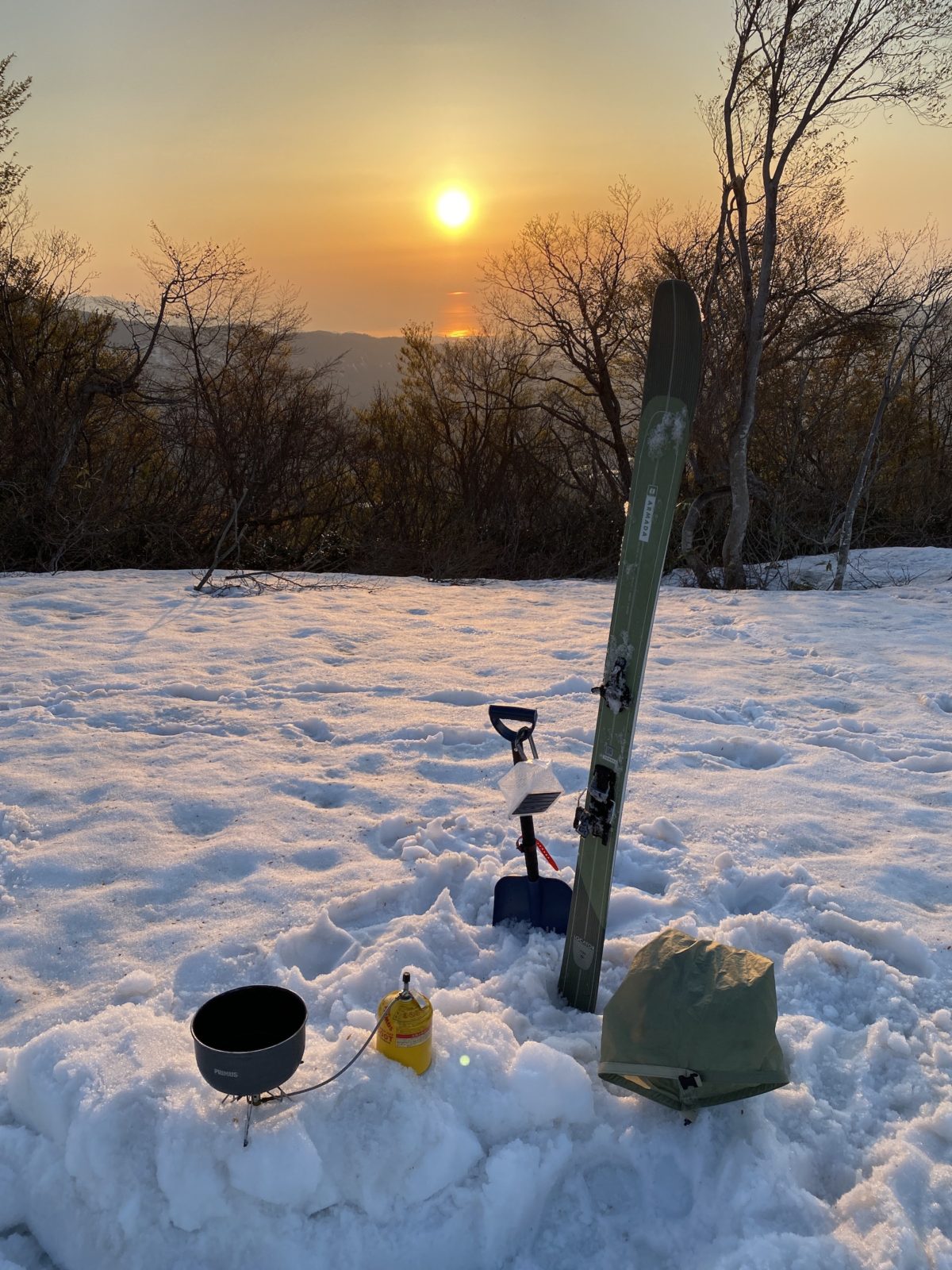
LOCATOR is a ski that I would especially recommend to those who enjoy backcountry skiing with hikes. Not only can it be used as the main machine for backcountry skiing, but it is also good to use the 104 or 96 board, which best embodies the style of hiking and riding, as a second machine in the low-powder season from February onwards.
The best way to test the lightness and gliding performance of LOCATOR is to actually pick it up and try it on.
COMPASS HOUSE, which is based in Nozawa Onsen, plans to hold a demonstration tour during the season, riding a LOCATOR test drive machine and skiing in the backcountry area.
Let's actually use it and check the ride quality. Details will be updated on the ARMADA website from time to time, so be sure to check it out.
the person who taught me
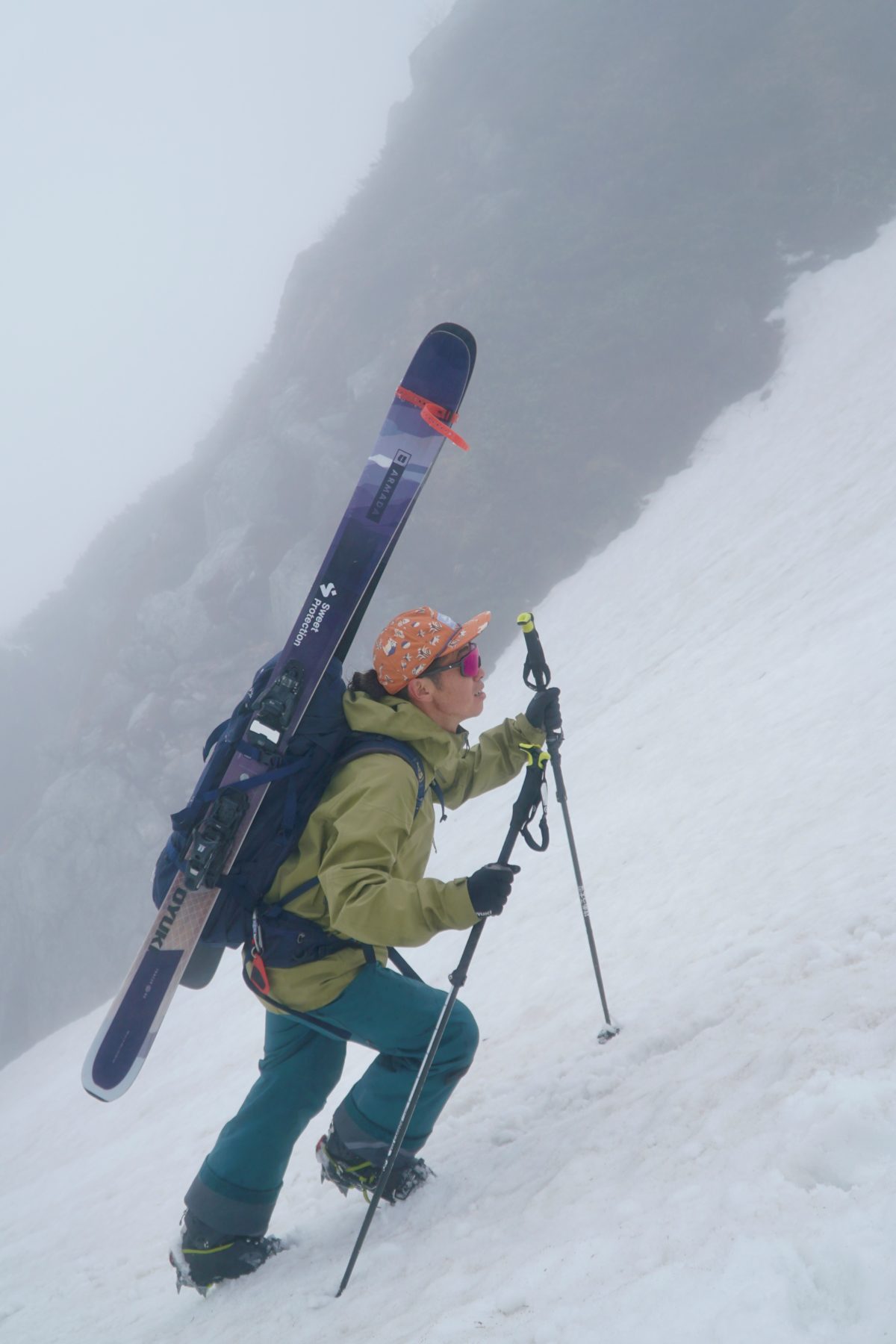
Kawaguchi TKY Takaya Kawaguchi
He took a leave of absence from university to practice freestyle skiing, and experienced the world's level after living in Bum in Whistler and Banff, Canada.
After a solo ski trip to Yukon Alaska that spring, his sense of values changed, and he began to focus on ski trips rather than park riding. He has traveled to over 50 countries on skis and surfboards so far, including a round-the-world road trip. His curiosity leads him to travel to remote areas and meet ethnic minorities. He also organizes BC tours and events in Japan to spread the joy of skiing and traveling. He presides over the travel planning ShareTavi project. Nozawa Onsen COMPASS HOUSE main guide. JMGA certified BC ski guide. (National English Guide Interpreter Qualification. Comprehensive Travel Service Supervisor Qualification. Comprehensive Itinerary Manager Qualification. Rishirifuji Ambassador)
Instagram: @tky_travel_skier
Interview cooperation: Kawaguchi TKY Takaya, COMPASS HOUSE

